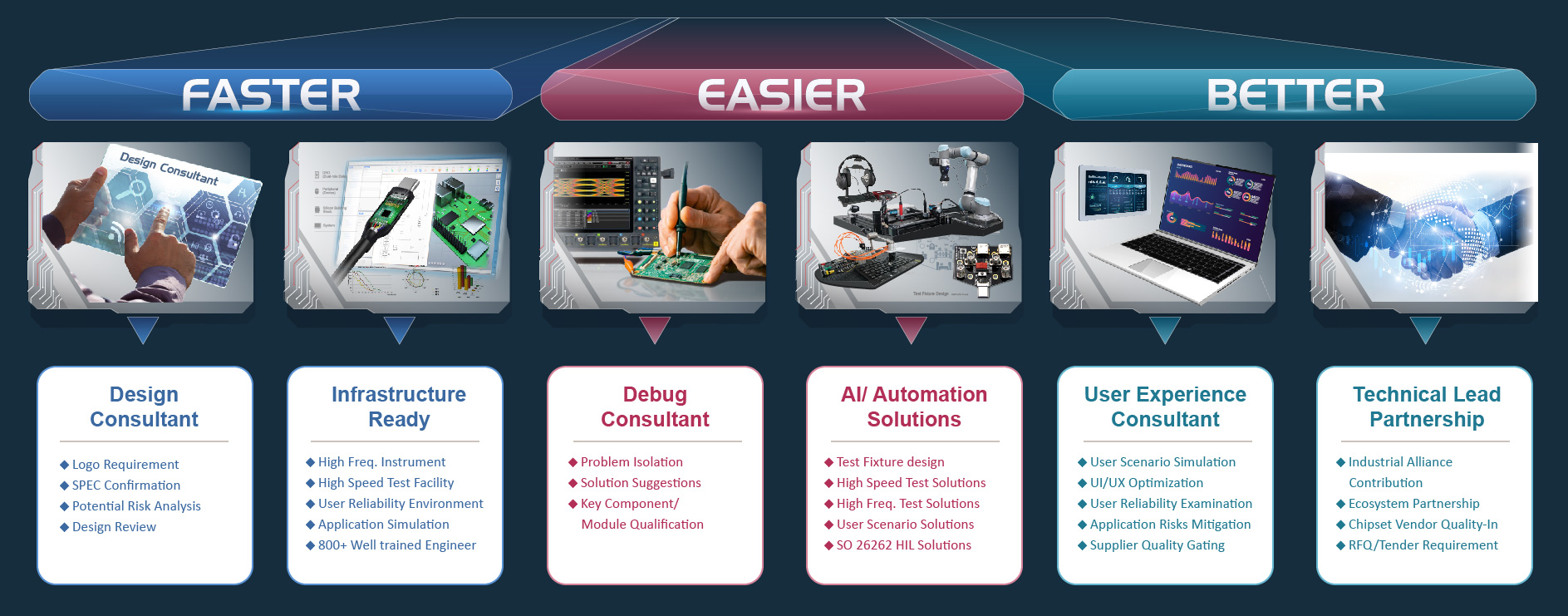Keyboards and mice are the most commonly used peripheral devices on systems. Historically, these devices were primarily connected using wired connections, but now wireless connectivity has gradually become mainstream. Wireless keyboards and mice typically utilize either Bluetooth technology or Radio Frequency (RF) technology. However, these technologies may also encounter some wireless interference issues, leading to poor user experiences, affecting brand reputation, and even resulting in return issues. This has become a point of consideration for procurement professionals during the Request for Quotation (RFQ) process.
The wireless interference risks and solutions for wireless keyboard and mouse
In recent years, wireless transmission technology has become quite common in keyboards and mice. In the market, we can see various types of wireless keyboards and mice, including: silent keyboards and mice designed for specific consumer groups, and low-latency gaming keyboards and mice. Regardless of their intended use, based on Allion’s extensive verification experience and market research, users have identified four major dissatisfaction issues with wireless keyboards and mice:
1. Unstable connection status
2. Susceptibility to environmental signal interference
3. Low battery life
4. Security risks
The stability of the connection and environmental signal interference are closely related. Typically, developers only verify RF performance to ensure basic antenna patterns and quality in standard chambers. However, in real-world environments, many types of wireless interference exist. Whether in residential areas, offices, or transportation hubs, countless wireless devices are operating in the 2.4GHz frequency band. This can lead to coexistence issues, resulting in a poor user experience!
At the same time, manufacturers will face various challenges:
- Do many of the interference scenarios actually exist as imagined?
- Have potential interference scenarios been overlooked?
- Is it only possible to send personnel to verify interference scenarios in person?

The Allion consulting team has proposed a solution for wireless environment reconstruction in response to the pain points of customers. We target common environments such as offices, airports, subways, internet cafes, exhibition halls, hospitals, and other locations. Using our professional equipment, we record the wireless interference signals in real-world environments and utilize our professional analysis and techniques to accurately replicate the interference conditions in a shielding room. This allows manufacturers to achieve on-site verification results in the laboratory, eliminating the need for exhaustive fieldwork and significantly improving the user experience.
The following image depicts an example of Allion’s real-world recording and interference reproduction in the laboratory (office scene):

The wireless interference observed in the office scene depicted in the above image reveals a high density of devices such as access points (APs), phones, and computers (with 34 2.4GHz APs present), with a prevalent usage pattern of long-term connections to fixed APs for network access. It is evident that the energy and utilization of Wi-Fi 2.4GHz channels are high, particularly concentrated around Channel 11. Upon further investigation, it was found that many APs are indeed operating on Channel 11, resulting in relatively higher energy and usage near this frequency band. Additionally, numerous Bluetooth devices were observed in operation (2404, 2426, 2480MHz), suggesting that the majority of the 2.4GHz band is occupied by Wi-Fi, leaving only non-Wi-Fi channels available for use, with many headphones/keyboards engaged in broadcast pairing activities.
Through wireless environment reconstruction technology, targeting wireless keyboard and mouse products, we identify key indicators that impact user experience and performance. By objectively evaluating these key indicators, we assist clients in optimizing their products.
Wireless Mouse
▶ Reporting Rate (Polling Rate)
The ‘polling rate’ refers to the communication frequency between the mouse and the computer, i.e., the number of times per second the mouse sends data to the computer. The polling rate is crucial for wireless mice as it affects the responsiveness and precision of the mouse. A higher polling rate means the mouse can transmit data to the computer more frequently, allowing for more immediate response to user actions. This is especially important for games that require quick reactions or tasks with high precision demands.
Wireless Keyboard
▶ Latency
Latency refers to the time it takes from when you press a key until the computer actually recognizes this input. For wireless keyboards, latency is a key indicator as it directly affects the responsiveness of user actions. If the latency is too long, users will perceive a lag in key response, especially in situations requiring rapid input, which can impact productivity and gaming experience. Therefore, a wireless keyboard with low latency can provide a more immediate and seamless user experience.
▶ Key Correct Rate(KCR)
KCR refers to the precision of a keyboard in transmitting input signals. For wireless keyboards, this means ensuring that each press is accurately identified and transmitted without any signal loss or errors. A high KCR ensures the precision and consistency of user input, which is crucial for both work and gaming.
Faster, Easier, Better!Wireless Peripheral Real-World Environment Simulation Consulting Service
The Allion Wireless Peripheral Consulting Team has accumulated extensive collaboration experience with international giants. With laboratory-grade environmental equipment and the ability to design customized user scenario tests, we can assist your product in achieving greater efficiency, simplicity, and perfection in both development evaluation and quality verification. This helps you reduce costs significantly in terms of time, manpower, and resources.”
Allion offers various wireless field simulation consulting services:
1. Performance testing of key indicators for wireless devices.
2. Provision of hypothetical interference conditions to understand the limits of a product’s interference resistance.
3. Recording of interference from different real-world scenarios.
4. Reconstruction of actual interference scenarios in isolation chambers.
Faster
No longer do you need to run around to perform validations in different environments; you can quickly obtain the necessary test results.
Easier
You can easily select the desired interference scenarios for reproduction, and when issues arise, you can replicate the problem phenomena in the laboratory, facilitating engineers in debugging.
Better
Allion specializes in reproducing actual interference scenarios, not hypothetical ones, making the simulations more closely aligned with real-world conditions.

If you have any wireless field simulation verification needs, please fill out the form and contact us immediately!






































